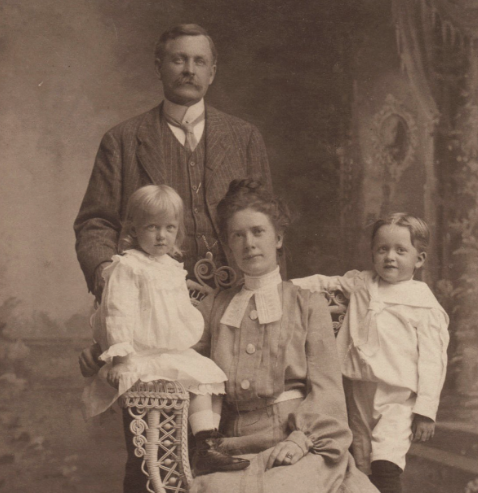
The national fertility rate has been in steady decline in recent decades, but the fundamental transition from high to low fertility in the United States occurred between the mid-nineteenth century and the 1930s.
New research just out in Demography sheds new light on how fertility decline began in late nineteenth-century America, sparking the historic shift known as the Demographic Transition.
“We show that a growing number of Americans were choosing to stop childbearing after two or three children,” said George Alter of the University of Michigan Population Studies Center, who authored the study with J. David Hacker of the Minnesota Population Center. “It was not a gradual shift from larger to smaller families, and this suggests that a new preference for very small families was spreading. By 1910, this ideal was becoming common in the northern states, though it had still not taken hold in the South.”
Today, demographers can understand childbearing goals and behaviors with questionnaires such as the CDC’s National Surveys of Family Growth, fielded since the 1970s. But to understand what happened at the turn of the century, these historical demographers looked at the impact of multiple births (e.g., having twins) on subsequent family limitation.
The researchers supposed that multiple births strain family resources in ways that should highlight preferences for family size, birth spacing, and stopping behavior. Since couples with surviving twins reached their target family size sooner than couples with singleton births, they should be more likely to practice family limitation.
They examined these hypotheses by analyzing families with twins in the 1900 and 1910 U.S. Censuses– a project that Hacker noted would not have been possible without the large number of observations in the full-count IPUMS data set.
The investigators also used two new techniques. J. David Hacker developed a new way to impute children who died before the Census. And they used a regression technique called the “cure model” developed in biomedical research to distinguish between stopping and spacing of births.
They found clear evidence of family limitation following multiple births: Couples with twins or triplets were more likely to stop childbearing, and those who continued having children delayed their next birth.
“The results show that many American couples responded to multiple births by practicing some form of birth control,” said Alter.
The researchers found no evidence that some groups relied on birth spacing to reduce family size while others relied primarily on stopping.
Responses to multiple births were larger in groups previously known to be the drivers of fertility decline– high-SES couples living in urban areas of the United States. As expected, the researchers found little or no evidence of birth control among farm families in the South or among first-generation immigrant groups – but stopping and spacing behavior of second-generation immigrant groups suggests these couples were assimilating to new American childbearing norms.
“Roughly one third of all couples were aiming to stop after two or three children,” said Alter. “These couples were the vanguard of the small families that became dominant for the rest of the twentieth century.”
George Alter is Research Professor at ICPSR and the Population Studies Center at the Institute for Social Research and Professor of History at the University of Michigan. J. David Hacker is Professor of History at the University of Minnesota and a member of the Minnesota Population Center.